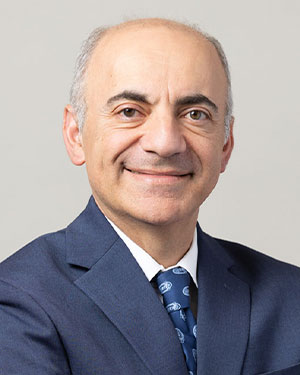Ramin Davidoff, MD, on value-based care and how it benefits older adults.
Edward Lee, MD, on telehealth and the future of hybrid care delivery

In a recent Q&A with Becker’s Hospital Review, Edward Lee, MD, executive vice president and chief information officer of The Permanente Federation, shared his perspective on telehealth’s continued impact, its effect on care delivery innovations at Kaiser Permanente, and the promise these advancements hold in the near future for patients and the health care industry alike.
While telehealth utilization has stabilized from pandemic highs, Dr. Lee noted that a significant portion of care visits are still being conducted via scheduled video or phone calls. Ambulatory care visits at Kaiser Permanente are outpacing industry averages, while visits for some specialties remain high — in 2022, about 70% of visits with infectious disease specialists, allergists, and endocrinologists took place by phone or video visits.
Mental health care also continues to see high demand for virtual visits. “Throughout 2021, we continued to conduct nearly all [94%] of mental health visits by phone or video and have seen similarly high levels of telehealth utilization [around 90% of visits] thus far in 2022,” said Dr. Lee, who also serves as associate executive director of The Permanente Medical Group.
With patients continuing to embrace the use of telehealth, they also want the option to see their doctor in person. In response, Permanente physicians and care teams have evolved to provide more hybrid, or fluid, care delivery options. Working together with patients, care teams can offer a mix of in-person, video, and phone visits — as well as other modalities such as remote monitoring and wearable technology — that best meet patient needs and preferences.
Related story: “Permanente physician leaders showcase innovation in care delivery”
“Remote patient monitoring is one area that shows tremendous promise for implementation in a range of areas,” said Dr. Lee. “For example, we are working to expand our home-based remote cardiac rehab program nationally and have begun enrolling pregnant patients in hybrid maternity care programs that include some video-based appointments and self-monitoring to track metrics such as blood pressure, weight, and fetal heart rate.”
In a recent mHealthIntelligence article, Dr. Lee expanded on wearable technology and its role in the success of the remote cardiac rehab program. While the program has yielded promising results in reducing secondary cardiac events and rehospitalizations, challenges in data collection exist. “We need to understand which patients would benefit from having this data available, what specific data elements should be collected, and which members of the care team are best suited to review this data,” he noted.
Still, the benefits of these innovative care delivery outweigh the challenges. “Member feedback affirms our belief that telehealth increases safety, convenience and cost savings for members by avoiding unnecessary in-person visits that require travel and time away from work or family,” said Dr. Lee. “Telehealth services also empower patients to prioritize their health and help prevent delays in seeking and obtaining care. It also improves access for members who live in remote areas or those who cannot easily leave their homes.”
Note: For the full articles, visit Becker’s Hospital Review and mHealthIntelligence.
Related story: “Joel Womack, MD, says communication is key to success of acute care-at-home programs”


